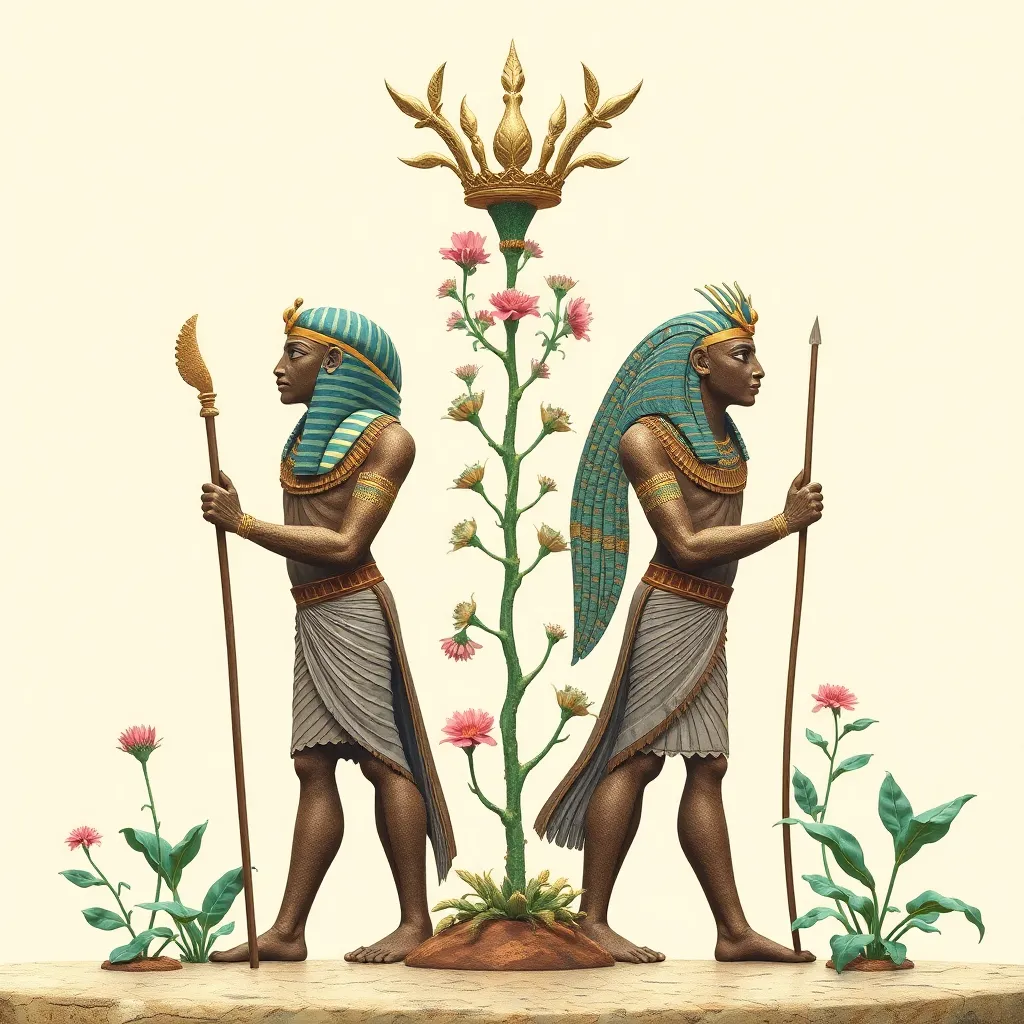The Connection Between Plants and Egyptian Deities
I. Introduction
Ancient Egyptian religion is a complex tapestry woven from beliefs, practices, and deities that reflect a profound reverence for the natural world. Central to this belief system is the critical role of nature, particularly plants, which are intricately linked to various gods and goddesses. This article aims to explore the significance of plants within Egyptian mythology, detailing their connections to deities and their impact on ancient Egyptian society.
II. The Role of Plants in Ancient Egyptian Society
Plants were not only vital for sustenance but also played a crucial role in the spiritual and cultural identity of the ancient Egyptians.
A. Agriculture and its significance in daily life
The Nile River provided fertile soil that allowed for the flourishing of agriculture. Key crops included:
- Wheat
- Barley
- Flax
- Legumes
This agricultural bounty was essential for food security, economic stability, and the sustenance of the population.
B. Symbolism of plants in Egyptian culture
Plants held deep symbolic meanings in Egyptian culture. They represented life, death, and rebirth, reflecting the cyclical nature of existence.
C. Plants as sources of medicine and nourishment
Many plants were utilized for medicinal purposes, offering cures for various ailments. For example, willow bark was used for pain relief, while garlic was believed to enhance strength and vitality.
III. Key Egyptian Deities Associated with Plants
A. Osiris: God of Agriculture and Fertility
Osiris, one of the most significant deities in the Egyptian pantheon, is deeply connected to agriculture and fertility.
1. Symbolism of grain and resurrection
Osiris is often depicted with wheat, symbolizing the cycle of life, death, and rebirth. His resurrection embodies the agricultural cycle, where the grain dies and is reborn each season.
2. Festivals and rituals involving plants
Festivals such as the Wepet-Renpet celebrated the new year and the planting season, honoring Osiris through rituals that included offerings of grain and other plants.
B. Isis: Goddess of Magic and Fertility
Isis, the sister and wife of Osiris, is associated with magic, healing, and fertility.
1. Connection to the papyrus plant
The papyrus plant, significant in ancient Egypt, is closely linked to Isis. It symbolized the nurturing aspects of the goddess, as she was often depicted among papyrus reeds.
2. Associations with healing and growth
Isis was believed to possess healing powers, with various plants being sacred to her for their medicinal properties.
IV. Sacred Plants in Egyptian Mythology
A. Lotus: Symbol of Creation and Rebirth
The lotus flower holds immense mythological significance in Egyptian culture.
1. Mythological significance
According to mythology, the lotus emerged from the primordial waters of chaos, symbolizing creation and the sun’s rebirth each day.
2. Artistic representations in temples and tombs
Artistic representations of the lotus can be found in various temples and tombs, often depicted as a symbol of purity and divine beauty.
B. Papyrus: The Plant of Life
Papyrus was essential not only for agriculture but also for daily life and communication.
1. Utilization in writing and daily life
Ancient Egyptians used papyrus to create scrolls for writing, documentation, and art, making it a cornerstone of their civilization.
2. Spiritual symbolism in mythology
In mythology, papyrus symbolizes life and renewal, reinforcing its importance in both practical and spiritual contexts.
V. The Importance of Plant Offerings in Religious Practices
A. Types of plant offerings in ancient rituals
Plants were frequently offered in rituals to appease the gods, including:
- Lotus flowers
- Wheat and barley
- Herbs and spices
B. The role of plants in funerary practices
In funerary rites, specific plants were placed in tombs as offerings to ensure a safe passage to the afterlife.
C. Symbolic meanings of specific plants in offerings
Each plant held specific symbolic meanings, reinforcing their importance in rituals and the connection to the divine.
VI. Artistic Representations of Plants and Deities
A. Depictions in hieroglyphics and wall paintings
Plants and deities were commonly depicted in hieroglyphics and wall paintings, showcasing their intertwined significance in art and religion.
B. The intersection of art, nature, and religion
Art served as a medium to express the deep connection between the natural world and spiritual beliefs, with plant motifs heavily incorporated in religious iconography.
C. Iconography of deities with plant motifs
Many deities, including Osiris and Isis, are depicted with plants, emphasizing their roles as guardians of agriculture and fertility.
VII. Modern Interpretations and Legacy
A. Influence of Egyptian plant symbolism on contemporary culture
The symbolism of plants from ancient Egypt continues to influence modern art, literature, and design, demonstrating the enduring legacy of these beliefs.
B. The relevance of ancient beliefs in modern botany and horticulture
Many plants revered in ancient Egypt are still cultivated today, showcasing the ongoing relevance of ancient knowledge in modern botany and horticulture.
C. Preservation of plant knowledge in Egyptian heritage
Efforts to preserve the traditional knowledge of plant uses and their cultural significance remain vital in maintaining Egyptian heritage.
VIII. Conclusion
In summary, the connection between plants and Egyptian deities reveals a rich tapestry of life, spirituality, and nature in ancient Egyptian culture. The significance of plants in rituals, mythology, and daily life underscores the deep interdependence between the natural world and the divine. As we reflect on this enduring legacy, it is crucial to appreciate the interconnectedness of nature and spirituality, as it continues to resonate in our modern lives.




